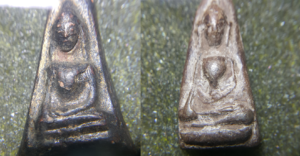The full moon has captivated humanity throughout history. Its luminous presence in the night sky has symbolized various aspects across diverse cultures. From folklore to religious events, the full moon has ingrained itself into the cultural fabric of societies. This article delves into the mystical allure of the full moon and its spiritual significance.
The Moon in Mythology and Religion:
For centuries, the moon has been revered and celebrated. Ancient civilizations often associated the moon with deities. In Hindu mythology, Chandra is the moon god, while in Greek mythology, Artemis is the goddess of the moon. Many religious festivals such as Easter in Christianity and Eid in Islam are linked to lunar cycles, demonstrating the moon’s special significance in human consciousness.
Scientific Perspective:
Scientifically, a full moon occurs when the moon is on the opposite side of the Earth from the Sun, and its face is fully illuminated. The moon’s gravitational pull affects Earth’s tides. While the scientific perspective primarily focuses on the physical attributes and impacts, the spiritual perspective delves into inner dimensions.
Influence on Human Mind:
Traditionally, the full moon period is often associated with heightened emotions and even madness – the word ‘lunacy’ is derived from ‘lunar’. However, many spiritual traditions see this as an opportunity for heightened states of consciousness. It is believed that during the full moon, the mind can be more receptive and can have enhanced clarity and perception. The moon has a deep impact on the human body and mind. The human body is about 60-72% water, and just as the moon’s gravity affects the oceans, it influences the human body too.
Energy and Meditation:
Aligning oneself with the natural cycles of nature, including the lunar cycle, is emphasized in many spiritual practices. It is believed that meditation and other spiritual practices can be more effective during the full moon. Certain spiritual programs and gatherings often include special meditation sessions during full moon nights, known as “Purnima”. The energy during the full moon is considered to be potent, making the system more receptive.
The full moon is also seen as a symbol of wholeness and realization. It is considered an opportune time for inner transformation. Being aware and conscious during this time can be particularly beneficial for spiritual seekers. It is often suggested, “On full moon nights, spend time in the open air gazing at the moon – you will have fewer thoughts.”
The spiritual significance of the full moon finds resonance with other spiritual traditions across the world. The Buddhist festival of Vesak, which commemorates the birth, enlightenment, and death of Buddha, is celebrated on the day of the full moon in the month of May. Native American tribes considered the full moons as markers for the start and end of seasons and named them accordingly, such as the Harvest Moon and the Strawberry Moon.
In contemporary spirituality, the full moon is often associated with release and manifestation. People create full moon rituals that often include meditation, setting intentions, and letting go of negativity. These practices are aimed at utilizing the full moon’s energies for inner transformation.
Harnessing Positive Energies on Full Moon Days:
On full moon days, it is beneficial to consciously engage in activities that channel positive energies. One effective practice is to light a candle during meditation. The gentle flame of the candle serves as a focal point and is believed to attract and amplify positive energies. As the full moon is known to magnify energies significantly, it is vital to be mindful of what kind of energies we are surrounded by. If a person is possessed by positive energies, these will be magnified, while the same applies to negative energies.
Furthermore, emotions too, are magnified during the full moon. It’s essential to be acutely aware of our emotional state during this period. For individuals who are more sensitive to the energy of the full moon, its effects may start to manifest three days before and continue for three days after the actual full moon day.
Given this, it is imperative to consciously choose to engage in activities that foster positive energies. Besides lighting a candle and meditating, one might choose to engage in practices such as deep breathing, spending time in nature, or participating in group activities that promote peace and harmony. Engaging with positive affirmations and expressing gratitude can also be powerful during this time.
By being mindful and deliberate in our actions, we can make the most of the full moon’s energy to enhance our spiritual well-being, cultivate positivity, and encourage personal growth and transformation.
The full moon has been a source of wonder, imbued with rich symbolic and spiritual significance. From ancient mythology to modern spirituality, its luminosity has guided human hearts in myriad ways. Engaging with the full moon consciously, whether through meditation, reflection, or simply basking in its light, can be a nurturing and transformative experience. The full moon, in
all its glory, invites us to align with the rhythms of nature and explore the depths of our inner landscapes.





